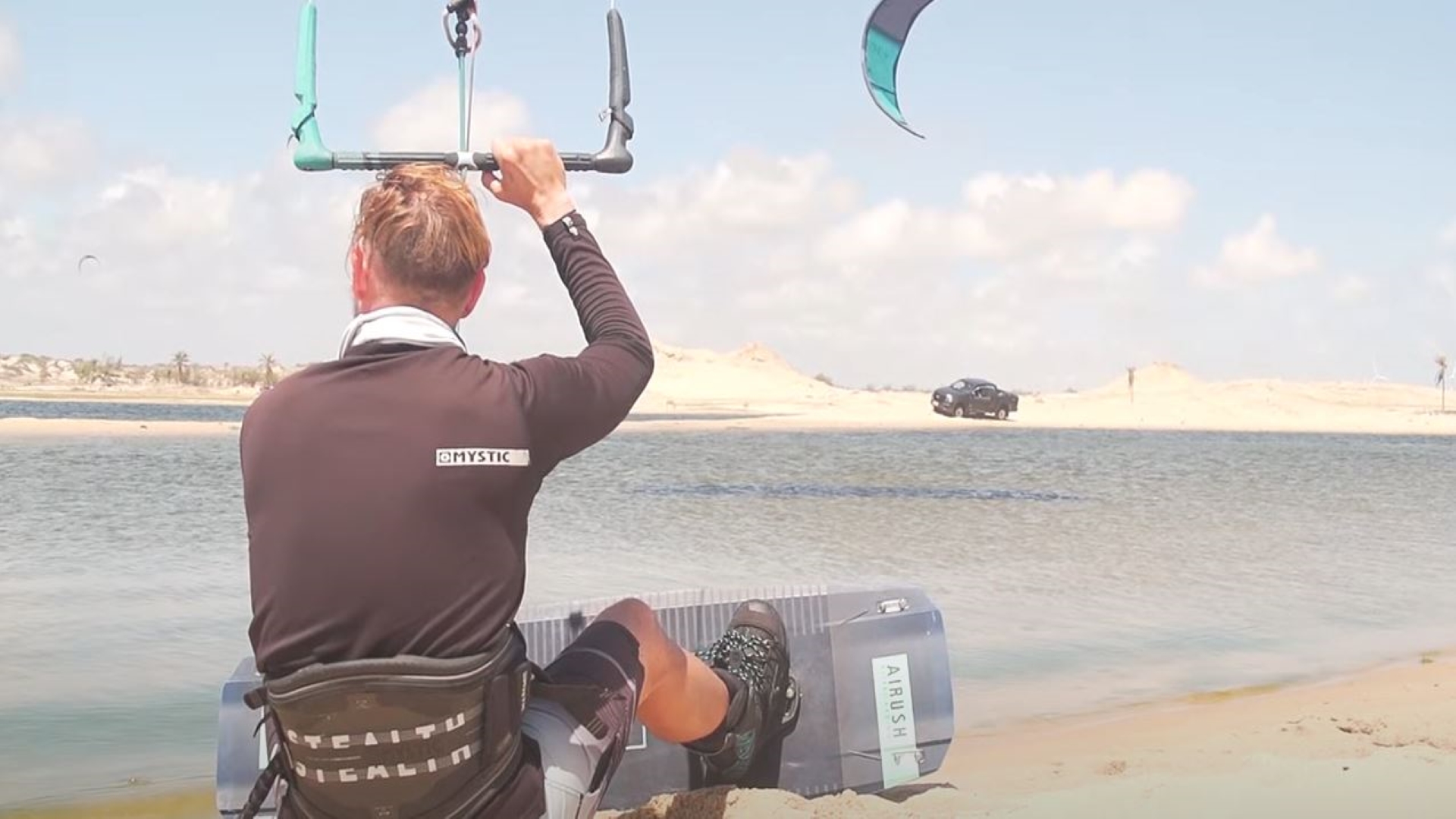RyGo's Kiteboarding Specific Workout
Hey, what's up guys? Rygo here from MACkite. Over the years we've done a few videos on fitness and we had some requests for a kiteboarding-specific workout routine, so I thought I would share my exact routine, why I'm doing the moves that I'm doing, and how they supplement kiteboarding, so let's dive into this one.
Calisthenics Routine

When it comes to working out, I've done a ton of routines over the past, and I've always made a point to follow something specific and written out by a coach or somebody whose job was fitness. I think following all of those basics is really important. I've done power lifting, I've done regular lifting, going to the gym with moderate weights, and what I found over the years is that calisthenics, where you're moving your body through space, transfer over to the kite the best. On top of that, they don't really take any equipment beyond an $11 pair of rings off of Amazon or a cheap pull-up bar. I found whenever I got into a routine where I was dedicated to calisthenics, I noticed a vast improvement in my kiteboarding and my core strength because you're moving your body as a cohesive unit, so you're using all of your muscles to move your body through space, which is the closest you can get to kiteboarding, as opposed to moving an external weight or trying to push something. Of course, all that stuff is really good and supplemental and I'm still a huge fan, but I've found for me that calisthenics are what translate over.
Kiteboarding Workout Goals
On top of that, we should talk about what the goal is for a kiteboarding workout routine. To do all of the basic tricks and spend time on the water having fun as long as possible, I think some of the key factors are endurance, injury prevention, and strength. If you follow the channel, you know I'm a huge believer in the fundamentals when it comes to everything. If you don't have the basics dialed, you're going nowhere, and for my routine it really is pretty basic: push-ups, pull-ups, dips, body weight squats, and I have also incorporated more advanced things like single leg squats. I'm now working on hanging from the bar with one arm. I'll usually get warm by doing a quick jog or doing some body weight squats. I'm not going to give numbers because everybody's different and your numbers are going to look different than mine. What's important is getting fatigued, not pushing yourself too hard, stimulate don't annihilate, and get better every workout.
Grip Strength
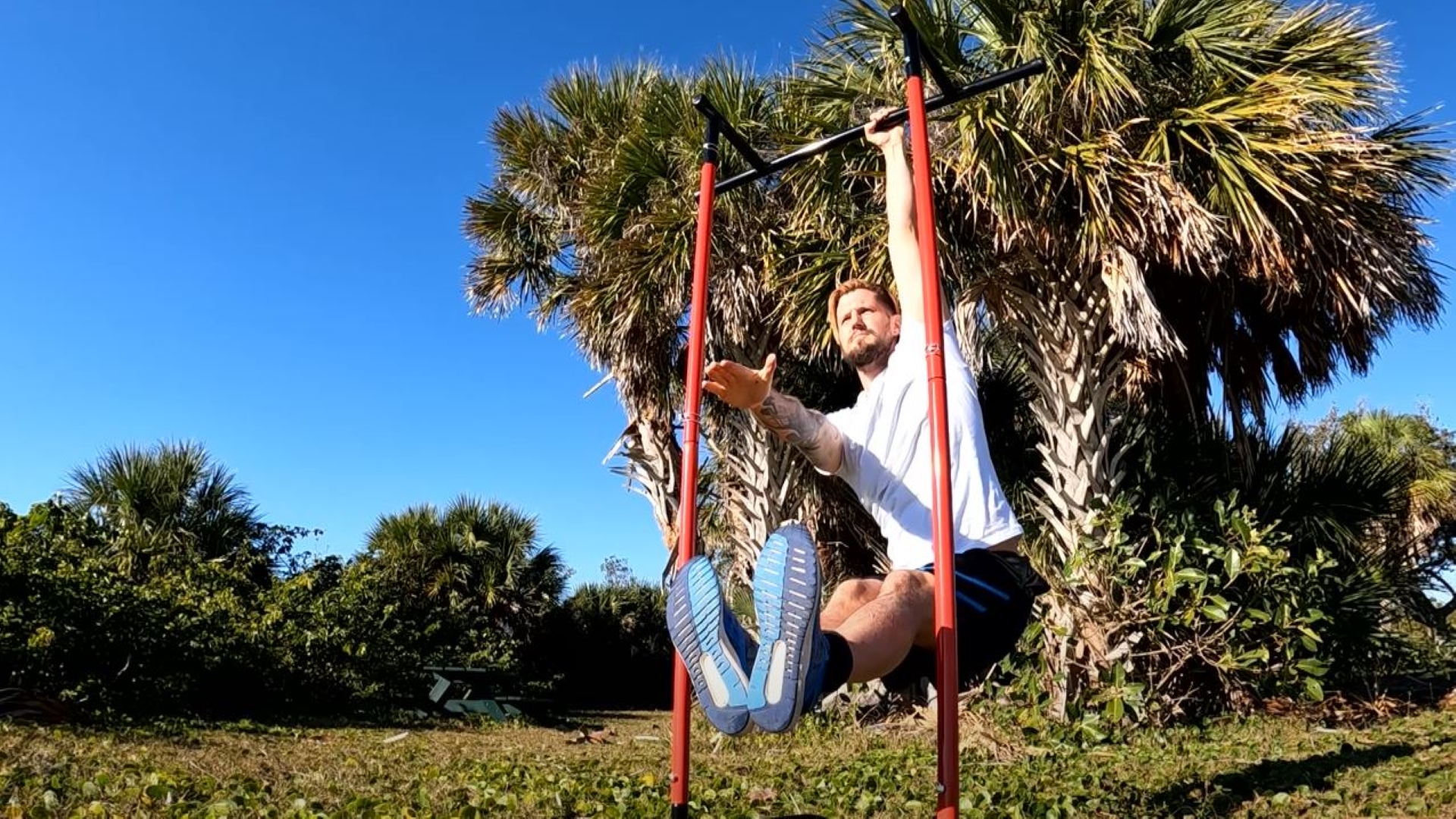
After I get warm with a run and some body weight squats, I'll hang from the bar and try to do three sets of 60 second hangs. I do hangs to strengthen my tendons; I want to strengthen my grip, and that comes down to just holding the bar. I think it's super valuable to have that grip strength for freestyle, and that's going to translate right back to kiteboarding as well as helping get your body warmed up for the workout that is to come.
Dips or Push-Ups

Next, to balance out the hangs, I will move into some dips or some push-ups and, again, it's pretty straightforward; I'm just trying to do one more rep than last time. I'll use a dip bar like the one I set up on the beach here today. Today I was just doing bodyweight dips, but sometimes I'll wear a weighted vest, sometimes I'll go higher rep. Endurance is an important thing to me, so I want to be able to go as long as possible. I can feel that balancing out the pull motion that I just did, and I can also feel it warming up my core and working everything. This applies to freestylers; when you're pulling the bar in and pushing it down to your hip, I do find that doing dips helps a lot with pushing the bar down to your hip, so if you're into handle passes, dips really do help.
Core Strength
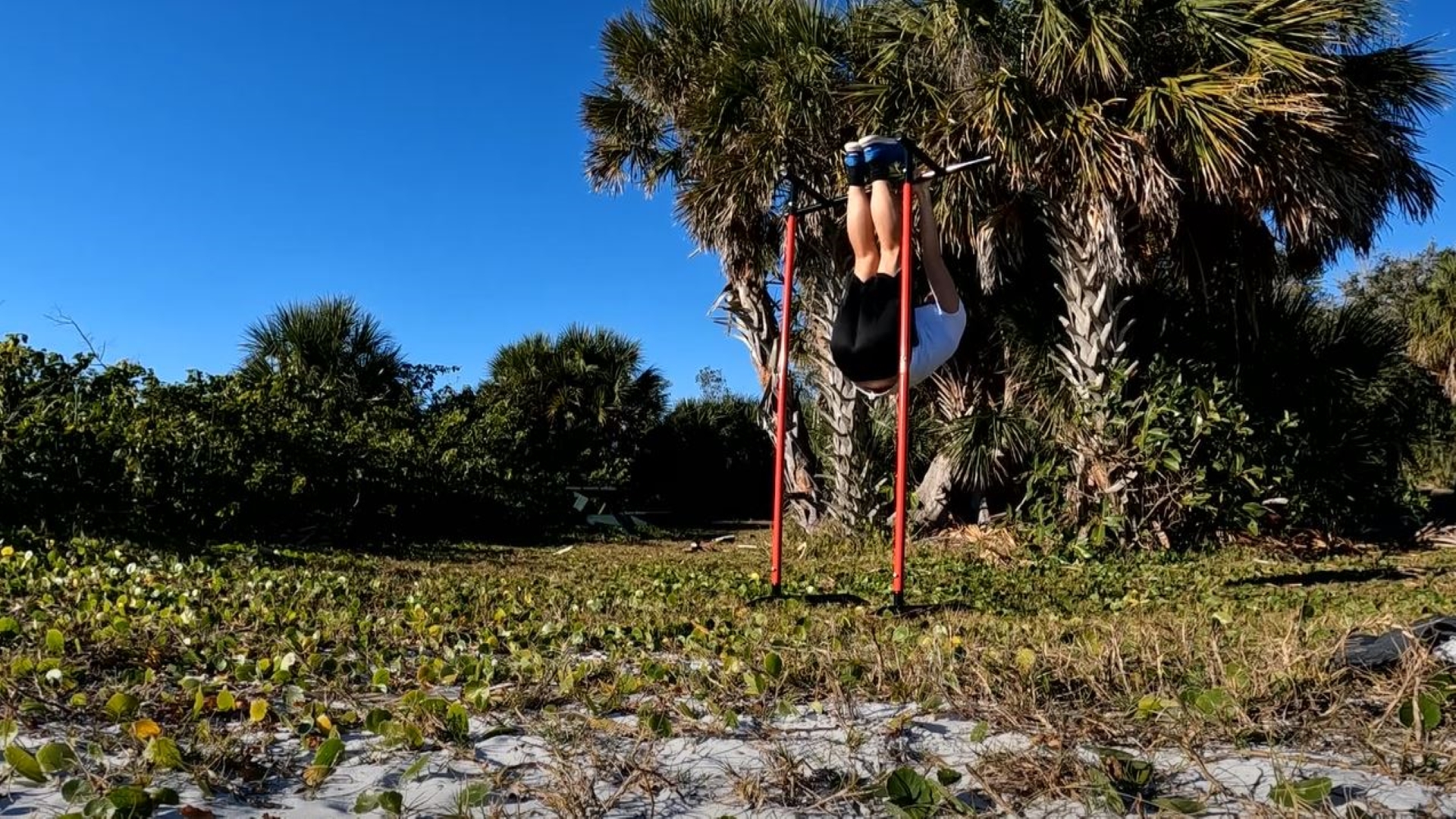
After dips I will again balance it back out and do my core. I do some toes to bar to have a strong core so that I can lift that board up for grabs and get small. We've talked about this in a lot of videos; for kiteboarding getting small is key. You want to be able to get your knees into your chest. Whether you're doing backrolls, front rolls, kiteloops... basically any trick or even board starts, the smaller your center of gravity, the more efficient you are at rotating. I want to maintain that strength to control the board. Core strength is also important for kiteloops. I've been doing a lot of videos with guys like Ewan Jaspan and Sean Bennett, and one of the key things that I keep seeing when we're talking about trick tips for kiteloop late backrolls and all that is you need to not let yourself get stretched out for some of these tricks and have that core strength to control the board while you're experiencing the force of those kiteloops.
Pull-Ups
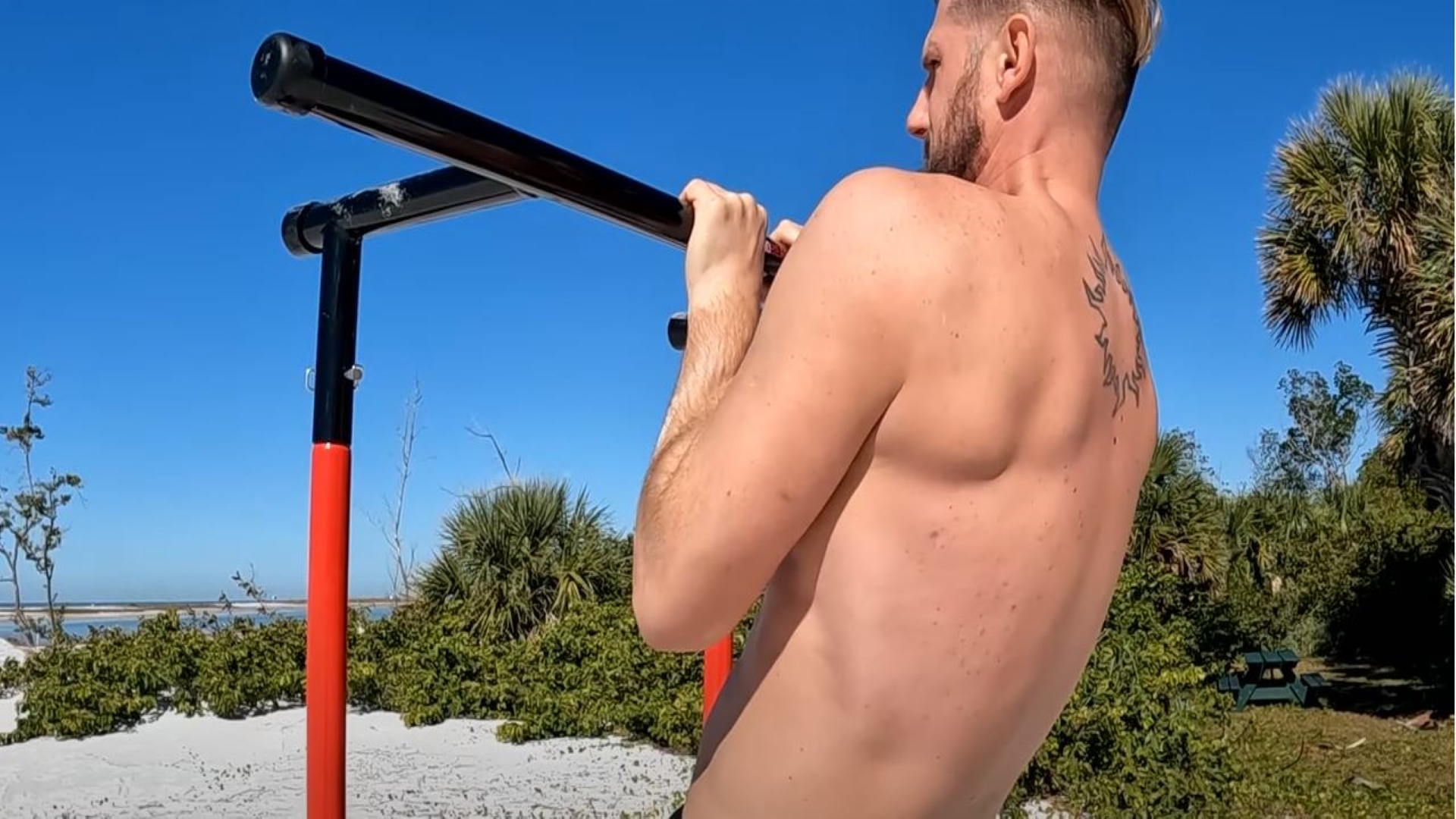
Next I will move into standard pull-ups. This is a back exercise. Again, I'm working my tendons, my ligaments, and I'm just trying to get strong and build up that endurance for kiteboarding.
Pike Press or Handstand
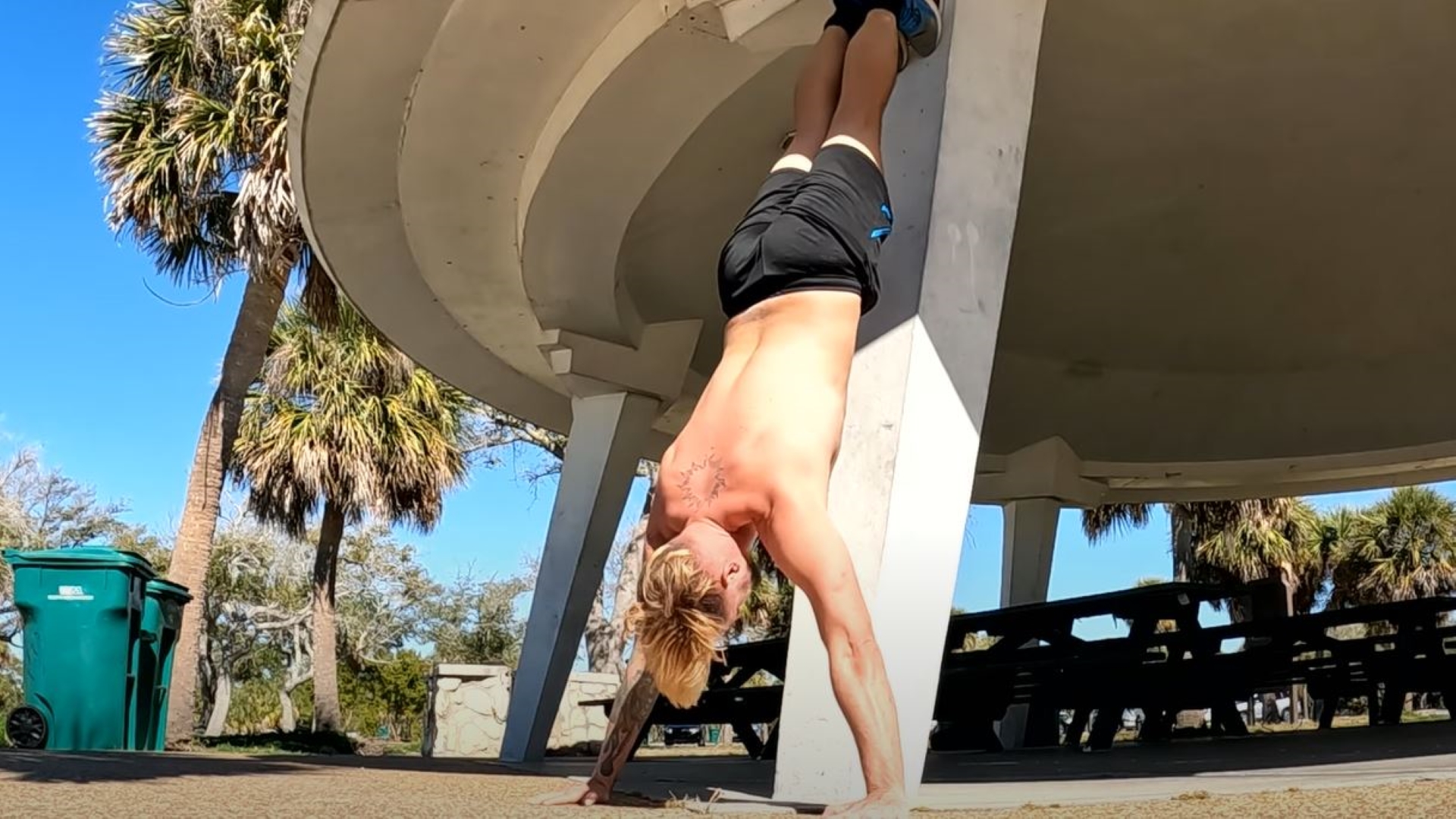
To balance out the pulling motion I just did, I will move on to a pike press or handstand. If I'm really sore or kind of worn down, I'll just go up to a wall and stand on my hands, and that really gets the blood flowing and gets my shoulders warm. I will also do handstand push-ups assisted against a tree, against a wall, or against my RV, just to try to hit that upward press motion to keep everything balanced out.
Chin-Ups
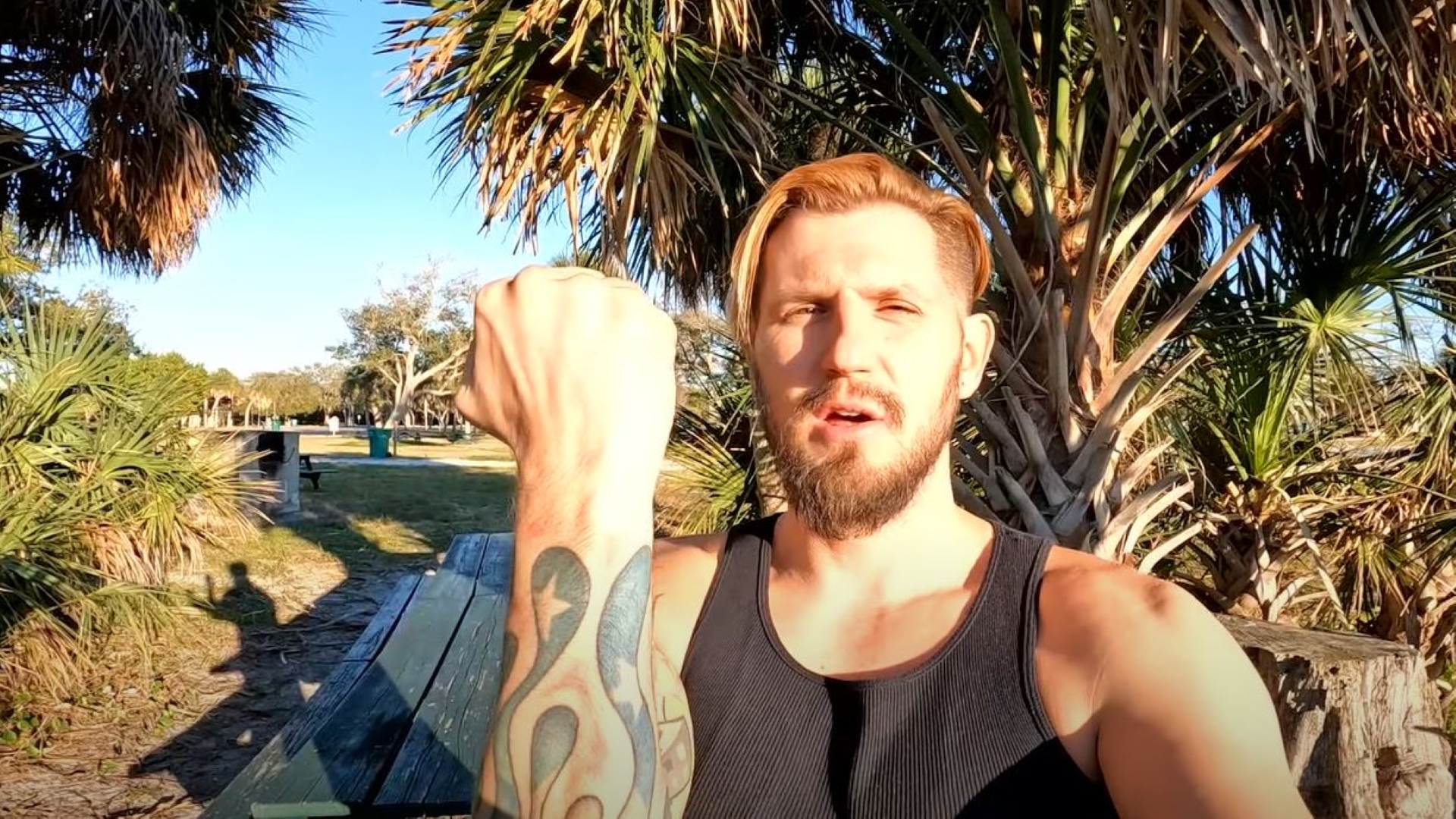
After that, I go back to chin-ups, but with my wrists facing me. This works the biceps, and again, you're coming back to your arms, your tendons, and you're still working your back, which you're using kiting, and most importantly you're engaging your core and you're learning to move your body through space.
What I'm getting at here is that a lot of this comes down to body awareness and spatial awareness, and doing these moves really helps you develop that spatial awareness. You're building up your tendons, you're building up your ligaments, you're building up your endurance, you are building muscle. By the way, the more muscle you have, the more injury-proof you are. Muscles really do help protect you on impact so you're able to fall more and you're able to try more.
Inverted Rows
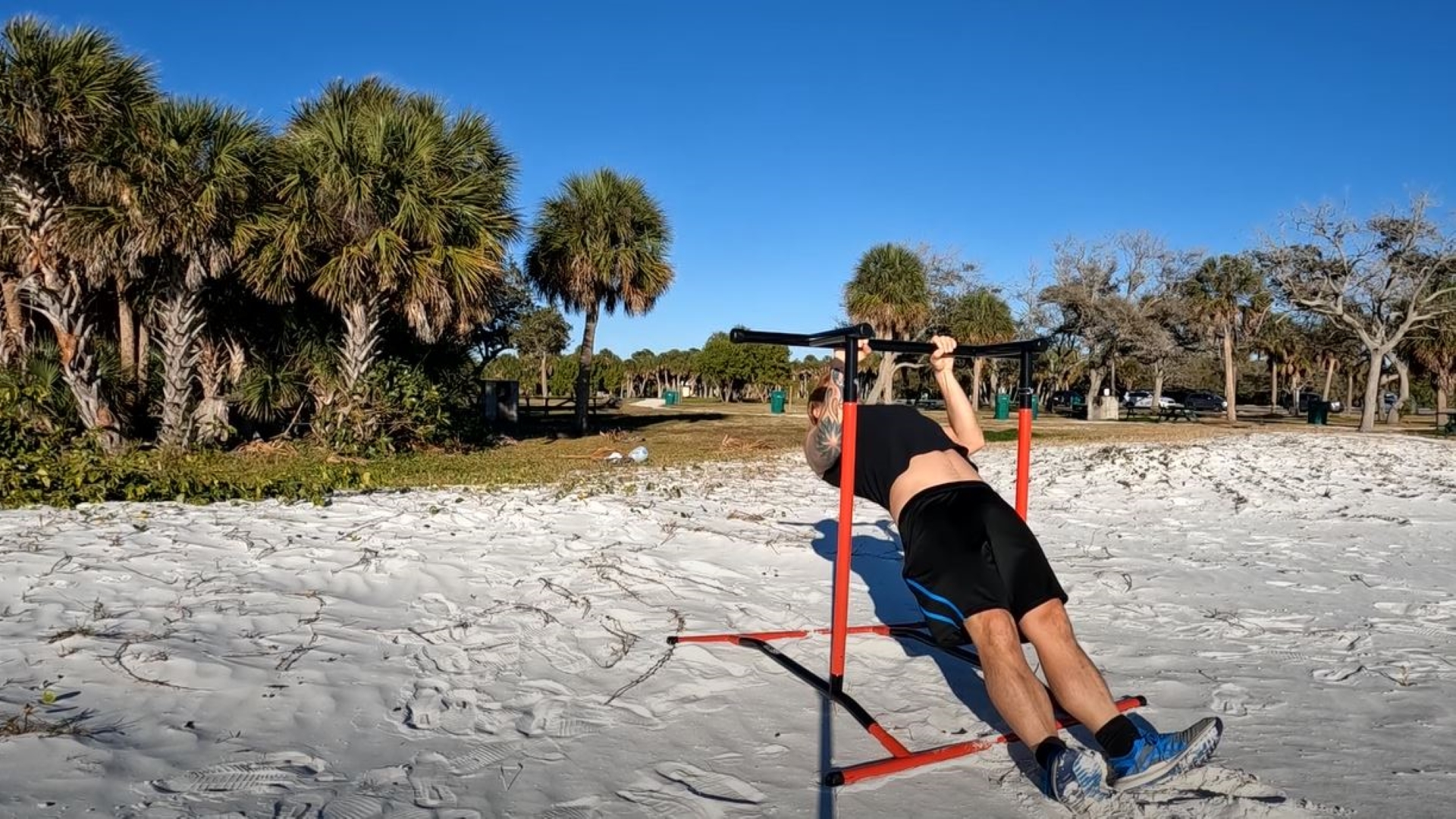
Another move that I'm a really big fan of is inverted rows. Rather than the vertical motion from the pull-up, it's a horizontal move and it works different parts of your back. This feels really close to kiteboarding, and if you're somebody who's into handle passes this will really strengthen your arm muscles, your back muscles, and everything you need to get that bar in close. Even if you're not into handle passes and you're just doing freeride or you're doing kiteloops, it's going to build up your arm and your back and help make you a little more injury-proof. One thing that I will do sometimes to spice this up if I'm not going crazy with the pull-ups is to do single arm rows, just to increase the intensity and make it a little more kite-specific.
Legs
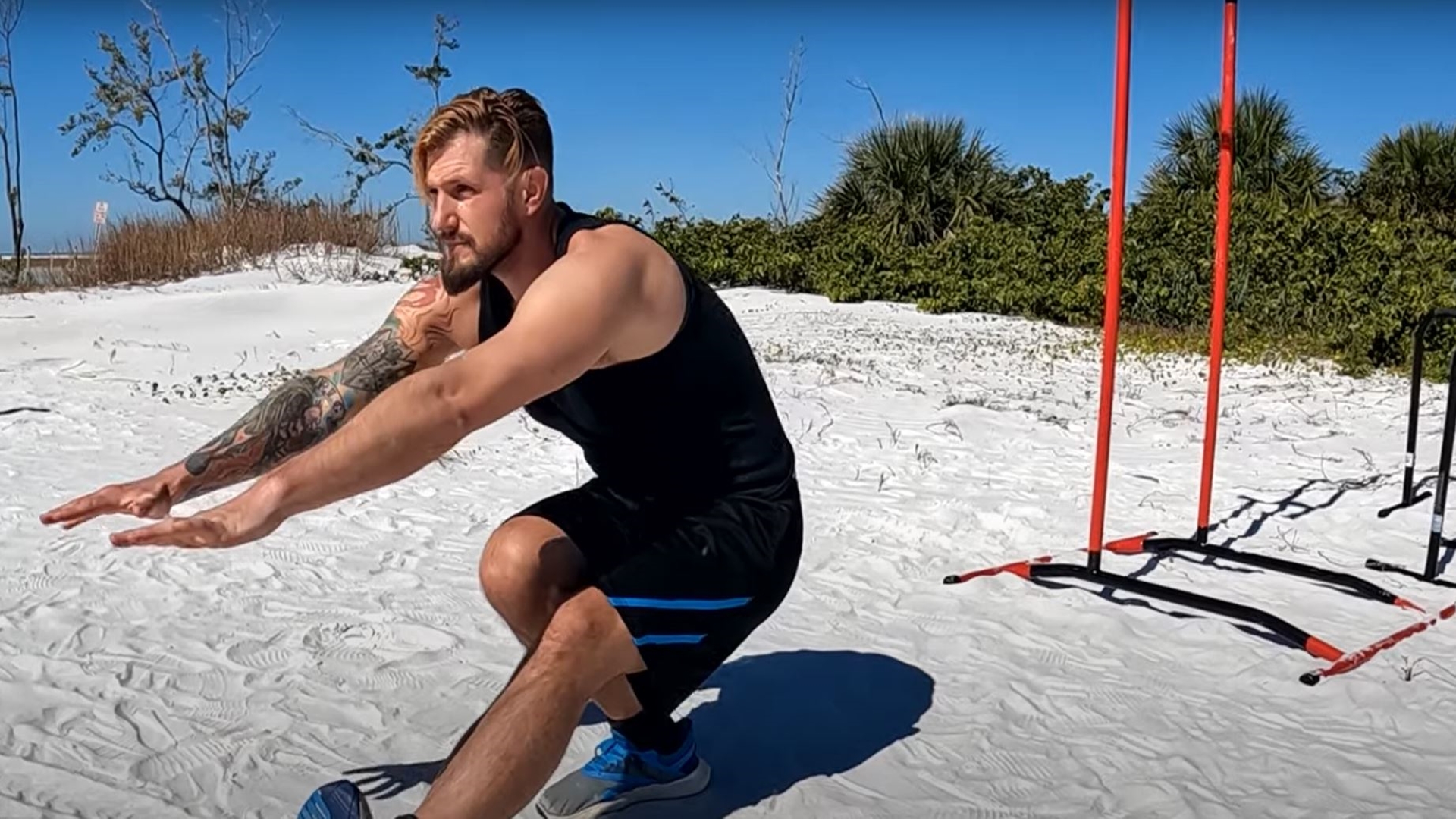
For your legs, this translates to your pop. It doesn't matter what your discipline is; you need to have strong legs so that you can pop off the water, and endurance is huge here. We've all had that session where you're out riding and your legs are just shot after a million jumps or kiteloops or whatever it is you're working on. Your core's shot, your legs are shot, your bum is shot. When you're doing all of these things, your core is pretty much always engaged in a calisthenic move. When you're doing squats, you can do bodyweight squats. Another move that I like to do is the Bulgarian split squat, or even just lunges. The Bulgarian split squat is where you put your leg up on a chair behind you and you do a single leg squat with the other leg. My personal favorite is the pistol squat, and this is more of a balance. I wouldn't say it's a party trick; I think some people would say it's debatable whether it's a super functional move, but I find it useful and I know Chris Bobryk finds this one extremely useful. Actually, that guy will jump onto a picnic table and land in a pistol squat! But again, you're strengthening your ligaments, your tendons, and you're getting better at balancing and being more aware of moving your body through space, and I think that's really huge. I will admit that I am a huge fan of weights when it comes to legs, and at home I actually had a squat rack set up, and even down here in Florida we have a membership for a gym, although I work outside probably 80 percent of the time. But I do like to get into the gym and just push some heavier weight because it is a little bit harder to progress on your legs. You can definitely do it, but once you're knocking out single leg squats for high reps, it feels good to start pushing some heavier weights.
That's actually it: sticking with the fundamentals, but focusing on endurance and building up tendons with the single arm hangs and things like that, and controlling your body through space. There are a lot of cool videos online with things that freestylers can do. I've got a buddy who will hang up a wakeboarding bar from his garage and he'll spin and hang upside down and do inverted things like that, but my gut says most people watching this video aren't freestylers. It's not the most popular discipline out there, but if you want to see a video like that, let me know and I'll do a specific video on that and break down some of the things that you can do. Otherwise, this is just a general riding for everybody video where it doesn't matter what your discipline is. This is what I do specifically to stay fit and ready for kiteboarding.
If you guys enjoyed this video, give it a thumbs up, hit that subscribe button, and I will catch you next time.

Recent Posts
-
North Navigator Pro Quick Release | How to Swap Yours Out With Ease
What You Need Before starting the replacement process, ensure you have all the necessary t …18th Apr 2024 -
Foil Drive | Essential Tips to Supercharge Your First Session
The Foil Drive makes your foiling life easier. You'll get up easier and catch more waves, …17th Apr 2024 -
2024 Duotone Slick Wing Review | What's New in This Year's Model?
The Duotone Slick has been a favorite of many for several years. Pros love it for its speed, …15th Apr 2024


